Don't wanna be here? Send us removal request.
Text
The Valley of Flowers: A Blossoming Paradise in the Himalayas
Introduction
Nestled high in the Himalayas, the Valley of Flowers is a breathtakingly beautiful national park renowned for its diverse and vibrant flora. Located in the Indian state of Uttarakhand, this UNESCO World Heritage Site offers a spectacular display of wildflowers and is surrounded by majestic peaks. The Valley of Flowers is not just a paradise for nature lovers but also holds significant cultural and spiritual value. This blog delves into the various facets of this enchanting valley, exploring its history, flora and fauna, best times to visit, and tips for travelers.
Historical and Cultural Significance
The Valley of Flowers was introduced to the world by British mountaineer Frank Smythe, who stumbled upon this floral wonderland in 1931 while returning from a successful expedition to Mt. Kamet. Smythe was so captivated by the beauty of the valley that he documented it extensively in his book "The Valley of Flowers." His writings brought global attention to this hidden gem, leading to its recognition as a UNESCO World Heritage Site in 2005.
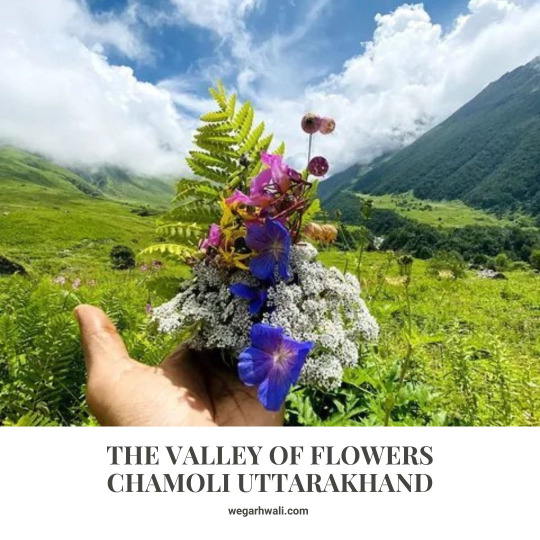
For the local communities, the Valley of Flowers holds deep spiritual significance. The valley is considered the abode of gods and goddesses in Hindu mythology, and it is believed to be the place from where Hanuman, the monkey god, collected the Sanjeevani herb to revive Lakshmana in the epic Ramayana.
Flora: A Kaleidoscope of Colors
The Valley of Flowers is renowned for its unparalleled variety of flora. During the monsoon season, from June to September, the valley transforms into a vibrant tapestry of colors with over 600 species of flowering plants in full bloom. Some of the most notable flowers include:
Blue Poppy (Meconopsis aculeata): The state flower of Uttarakhand, this delicate flower is a rare sight and a highlight of the valley.
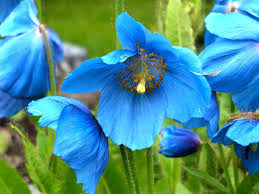
Brahma Kamal (Saussurea obvallata): This sacred flower, associated with Lord Brahma, blooms at night and is considered highly auspicious.
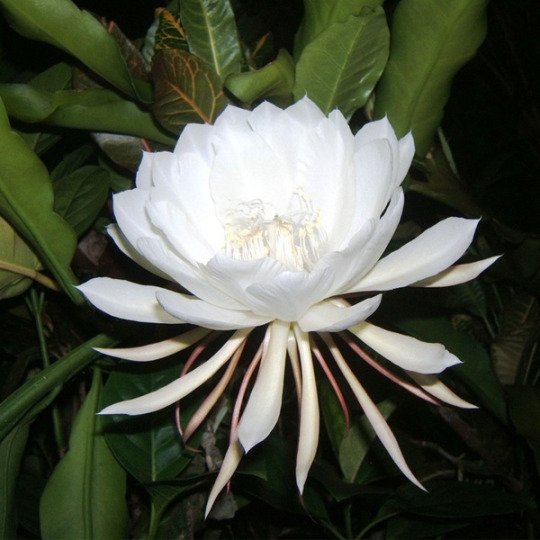
Cobra Lily (Arisaema consanguineum): Known for its unique shape resembling a cobra's hood, this flower adds an exotic touch to the valley.

Primula (Primula denticulata): These colorful clusters of flowers are among the first to bloom in the valley.
Orchids and Anemones: Adding to the valley's charm are various species of orchids and anemones, creating a diverse floral mosaic.
The valley's flora also includes several medicinal plants used in traditional Ayurvedic practices, contributing to the local knowledge of herbal remedies.
Fauna: Wildlife in the Valley
While the flora steals the show, the Valley of Flowers is also home to a variety of fauna. The valley provides a habitat for several endangered and rare species. Some of the notable wildlife includes:
Snow Leopard (Panthera uncia): This elusive and endangered big cat is one of the most sought-after sightings in the valley.
Himalayan Black Bear (Ursus thibetanus): These bears are often seen foraging in the valley.
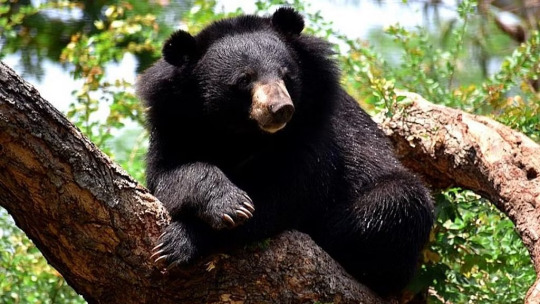
Musk Deer (Moschus chrysogaster): Known for its musk gland, this small deer species is endangered due to poaching.
Blue Sheep (Pseudois nayaur): Also known as bharal, these sheep are commonly seen grazing on the high slopes.
Birds: The valley is a birdwatcher's paradise with species like the Himalayan Monal, Snow Partridge, and various high-altitude raptors.
Best Time to Visit
The best time to visit the Valley of Flowers is during the monsoon season, from mid-July to mid-September. During this period, the valley is in full bloom, offering visitors a mesmerizing spectacle of flowers. The weather is also relatively mild, making it ideal for trekking and exploring the valley.
Trekking to the Valley of Flowers
The journey to the Valley of Flowers is as enchanting as the destination itself. The trek starts from Govindghat, a small town located on the banks of the Alaknanda River. Here is a detailed itinerary for the trek:
Day 1: Govindghat to Ghangaria (14 km)
The trek begins with a gradual ascent from Govindghat to Ghangaria, covering a distance of 14 kilometers. The trail passes through lush green forests, alongside the Pushpawati River, and offers stunning views of the surrounding mountains. Ghangaria, located at an altitude of 3,050 meters, serves as the base camp for the Valley of Flowers and Hemkund Sahib trek.
Day 2: Ghangaria to Valley of Flowers (4 km one way)
From Ghangaria, a 4-kilometer trek leads to the Valley of Flowers. The trail is well-marked and gradually ascends through dense forests, crossing several streams. As you approach the valley, the sight of blooming flowers and the fragrance in the air create an unforgettable experience. Spend the day exploring the valley, capturing its beauty through photographs, and enjoying the serene ambiance.
Day 3: Ghangaria to Hemkund Sahib (6 km one way)
For those with more time and energy, a trek to Hemkund Sahib, a revered Sikh shrine, is highly recommended. The trail to Hemkund Sahib is steeper and more challenging, but the reward is worth the effort. Hemkund Sahib, situated at an altitude of 4,329 meters, is a glacial lake surrounded by seven snow-capped peaks. The pristine lake and the Gurudwara (Sikh temple) offer a serene and spiritual experience.
Day 4: Return to Govindghat
After exploring the Valley of Flowers and Hemkund Sahib, trek back to Govindghat. The return journey offers another opportunity to soak in the beauty of the region and reflect on the magical experiences.
Tips for Travelers
To make the most of your visit to the Valley of Flowers, here are some essential tips:
Acclimatization: The high altitude can pose a challenge for some visitors. Spend a day at Ghangaria to acclimatize before heading to the valley.
Permits: Obtain the necessary permits from the forest department office in Ghangaria. The valley is a protected area, and entry is regulated.
Gear: Pack light but carry essential trekking gear, including sturdy hiking boots, rain gear, warm clothing, and a first aid kit.
Guides: Hiring a local guide can enhance your experience as they can provide valuable insights into the flora, fauna, and history of the valley.
Respect Nature: Follow the principles of Leave No Trace. Do not pluck flowers, litter, or disturb the wildlife.
Weather: Be prepared for sudden weather changes. Carry extra layers and waterproof gear.
Hydration and Nutrition: Carry enough water and energy snacks. There are limited facilities in Ghangaria and none in the valley.
Fitness: Ensure you are physically fit for the trek. Regular cardio and strength training can help prepare for the journey.
Conclusion
The Valley of Flowers is a natural wonder that captivates the hearts of all who visit. Its stunning beauty, rich biodiversity, and spiritual significance make it a must-visit destination for trekkers, botanists, and nature enthusiasts. Whether you are seeking adventure, peace, or a connection with nature, the Valley of Flowers offers an experience that will stay with you forever. So, pack your bags, lace up your boots, and embark on a journey to this floral paradise in the Himalayas.
0 notes
Text
Ranikhet, a quaint hill station located in the Almora district of Uttarakhand, India, is renowned for its stunning natural beauty and rich biodiversity. Perched at an altitude of approximately 1,869 meters (6,132 feet) above sea level, Ranikhet offers a unique blend of subtropical and temperate climates, providing an ideal environment for a wide variety of flora and fauna. This article explores the biodiversity of Ranikhet, examining its diverse ecosystems, key species, conservation challenges, and ongoing efforts to protect its natural heritage.
Geographical and Climatic Diversity

Ranikhet's geographical diversity ranges from lush valleys and dense forests to rolling hills and alpine meadows. The region experiences a moderate climate with pleasant summers and cold winters, and it receives substantial rainfall during the monsoon season. This climatic variation, combined with the diverse topography, creates numerous microhabitats that support a rich array of plant and animal life.
Flora of Ranikhet
Subtropical Forests
In the lower altitudes of Ranikhet, subtropical forests dominate the landscape. These forests are characterized by:
Sal (Shorea robusta): Sal trees are common in the lower regions, providing valuable timber and forming the backbone of these forests.
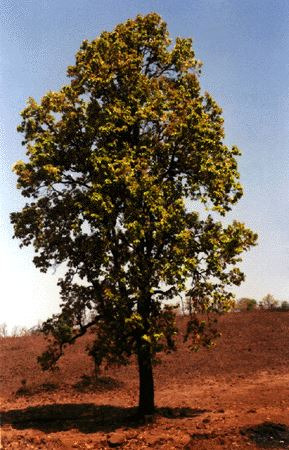
Chir Pine (Pinus roxburghii): Chir Pine forests are widespread, playing a significant role in the local economy due to their resin and timber.
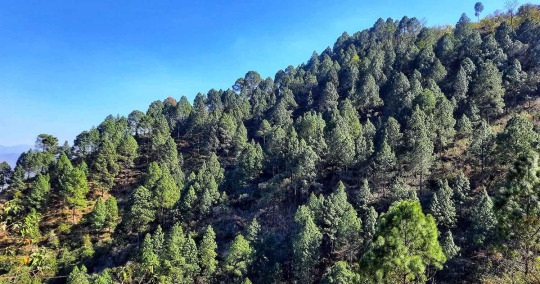
The undergrowth in these forests is rich with a variety of shrubs, grasses, and herbs, creating a dense and diverse habitat.
Temperate Broadleaf and Mixed Forests
As one ascends to higher altitudes, subtropical forests give way to temperate broadleaf and mixed forests. Key species in these forests include:
Oak (Quercus spp.): Several species of oak, such as Banj Oak (Quercus leucotrichophora) and Moru Oak (Quercus floribunda), are common. These trees are crucial for maintaining soil stability and supporting diverse wildlife.
Rhododendron (Rhododendron arboreum): The state tree of Uttarakhand, the rhododendron, is known for its vibrant red flowers that bloom in the spring.
These forests also support a variety of ferns, lichens, and mosses, adding to the biodiversity of the region.
Subalpine Vegetation
In the highest regions of Ranikhet, subalpine vegetation becomes dominant. This zone is characterized by:
Coniferous Trees: Species such as Blue Pine (Pinus wallichiana) and Deodar (Cedrus deodara) are prevalent, adapted to the colder and harsher conditions.
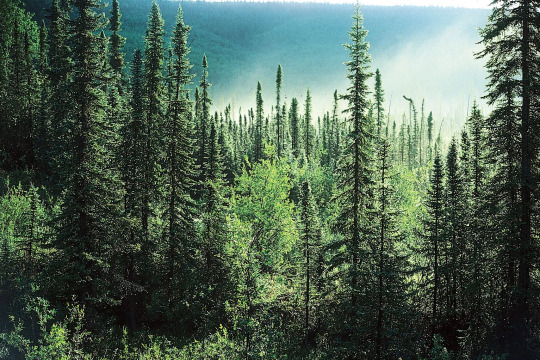
Alpine Meadows: During the short growing season, alpine meadows burst into a riot of colors with wildflowers like the Himalayan Blue Poppy (Meconopsis betonicifolia) and various species of primulas and asters.
Fauna of Ranikhet
Mammals
Ranikhet’s diverse habitats support a wide range of mammalian species, many of which are adapted to the varying altitudinal zones.
Himalayan Black Bear (Ursus thibetanus): This bear is often seen in the temperate forests, foraging for food and known for its distinctive white chest patch.
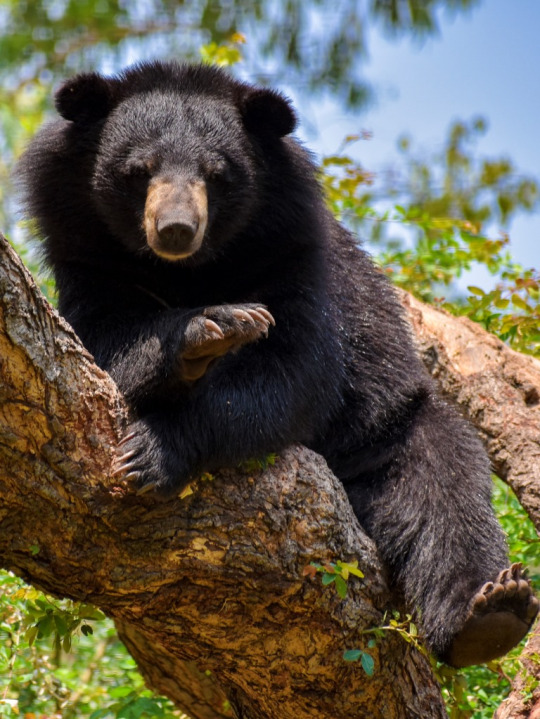
Leopard (Panthera pardus): Leopards are elusive predators found across various altitudes, playing a crucial role in maintaining the ecological balance.

Goral (Naemorhedus goral): This small, agile ungulate inhabits the rocky slopes and cliffs, known for its excellent climbing abilities.

Barking Deer (Muntiacus muntjak): Commonly found in the lower forests, this deer species is known for its bark-like call used to communicate danger.
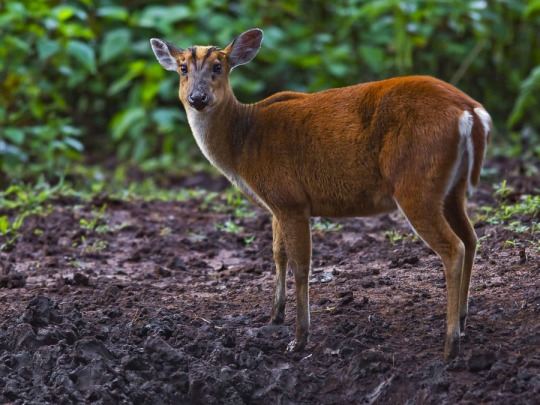
Birds
Ranikhet is a paradise for birdwatchers, with a rich avifauna that includes both resident and migratory species.
Himalayan Monal (Lophophorus impejanus): The national bird of Nepal, the Himalayan Monal, is known for its stunning iridescent plumage and is commonly found in the higher forests.
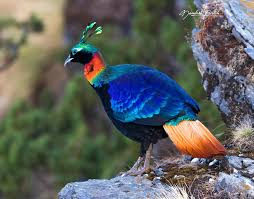
Kalij Pheasant (Lophura leucomelanos): This beautiful bird with striking black and white plumage is often seen foraging in the underbrush.
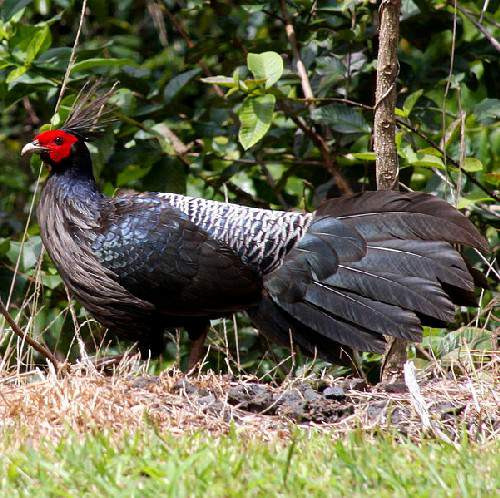
Himalayan Griffon (Gyps himalayensis): A large vulture that plays a vital role in the ecosystem by feeding on carrion.
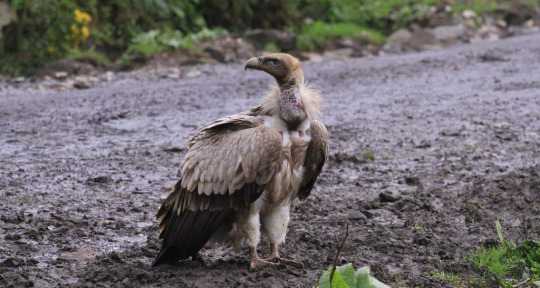
White-throated Laughingthrush (Garrulax albogularis): These social birds are often seen in flocks, making their presence known with their loud calls.
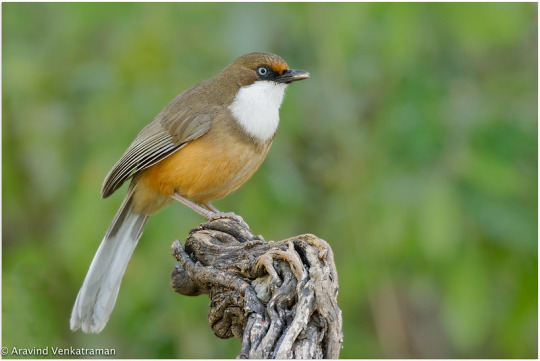
Reptiles and Amphibians
Ranikhet also supports a variety of reptiles and amphibians, particularly in the lower and mid-altitude zones.
Himalayan Pit Viper (Gloydius himalayanus): A venomous snake adapted to the cooler climates, often found in rocky areas.
Common Toad (Duttaphrynus melanostictus): Widely distributed, these toads are commonly seen during the monsoon season.
Invertebrates
The invertebrate fauna of Ranikhet includes numerous species of insects, spiders, and other arthropods. The region is particularly rich in butterflies, with notable species such as the Common Peacock (Papilio bianor) and the Indian Tortoiseshell (Aglais caschmirensis).
Endangered Species and Conservation Efforts
The biodiversity of Ranikhet faces various threats from habitat loss, climate change, and human activities. Several species in the region are classified as endangered or critically endangered.
Key Endangered Species
Himalayan Musk Deer (Moschus leucogaster): Poached for its musk gland, this deer species is in decline.
Western Tragopan (Tragopan melanocephalus): Habitat destruction and hunting have significantly reduced its population.
Snow Leopard (Panthera uncia): Though more common in higher regions, occasional sightings and conservation efforts in Ranikhet are crucial for this species.
Conservation Initiatives
Efforts to protect the biodiversity of Ranikhet involve a combination of government policies, non-governmental organizations, and community participation.
Protected Areas: Establishing and maintaining protected areas like the Binsar Wildlife Sanctuary, which provides a safe haven for many species.
Community-Based Conservation: Engaging local communities in conservation efforts, promoting sustainable practices, and providing alternative livelihoods to reduce dependence on forest resources.
Anti-Poaching Measures: Strengthening anti-poaching laws and enhancing enforcement to protect endangered species from illegal hunting and trade.
Research and Monitoring: Continuous research and monitoring are essential for tracking the health of ecosystems and the populations of key species, providing data to inform conservation strategies.
The Impact of Climate Change
Climate change poses a significant threat to the biodiversity of Ranikhet. Rising temperatures, changing precipitation patterns, and extreme weather events are already having profound effects on the region's ecosystems.
Glacial Melt
Although Ranikhet is not directly affected by glacial melt, the broader impacts on water resources and climate patterns in the Himalayas influence the region. Changes in water availability can affect both human communities and wildlife.
Shifts in Vegetation Zones
As temperatures rise, vegetation zones are shifting upward, forcing species to migrate to higher altitudes. This can lead to habitat loss and increased competition among species. Alpine plants, in particular, are at risk as they have limited space to move.
Phenological Changes
Climate change is also affecting the timing of biological events, such as flowering and breeding. These phenological changes can disrupt ecological interactions, such as pollination and predator-prey relationships, further stressing the biodiversity of the region.
Sustainable Tourism and Biodiversity Conservation
Tourism is a significant economic activity in Ranikhet, attracting visitors for its natural beauty, wildlife, and cultural heritage. However, tourism can also pose threats to biodiversity if not managed sustainably.
Ecotourism
Promoting ecotourism, which emphasizes responsible travel and environmental conservation, can help mitigate the negative impacts of tourism. Ecotourism initiatives focus on minimizing environmental footprints, supporting local communities, and educating tourists about conservation.
Best Practices for Sustainable Tourism
Waste Management: Implementing effective waste management systems to reduce litter and pollution in natural areas.
Eco-Friendly Accommodations: Encouraging the development of eco-friendly accommodations that use renewable energy and sustainable practices.
Guided Tours: Offering guided tours led by trained naturalists to educate tourists about the local biodiversity and conservation efforts.
Community Involvement: Involving local communities in tourism activities to ensure that they benefit economically and are incentivized to protect their natural surroundings.
Conclusion
The biodiversity of Ranikhet is a testament to the intricate balance of nature, shaped by its unique geography, climate, and ecosystems. From the dense subtropical forests to the alpine meadows, Ranikhet supports a rich array of plant and animal species, many of which are endemic and endangered. Conservation efforts, including protected areas, community-based initiatives, and sustainable tourism practices, are crucial to preserving this natural heritage. As climate change and human activities continue to pose challenges, it is imperative to strengthen these efforts to ensure that the biodiversity of Ranikhet can thrive for generations to come.
0 notes
Text
Biodiversity of Almora
Almora, nestled in the Kumaon region of Uttarakhand, India, is a picturesque town that boasts a rich tapestry of biodiversity. Located at an altitude of 1,646 meters (5,400 feet), Almora is surrounded by dense forests, fertile valleys, and majestic mountains, creating a unique habitat for a diverse array of flora and fauna. This article delves into the biodiversity of Almora, exploring its various ecosystems, key species, conservation challenges, and efforts to protect its natural heritage.
Geographical and Climatic Diversity
Almora’s geographical diversity ranges from the subtropical valleys to the temperate and subalpine zones, creating a variety of microclimates that support distinct ecosystems. The region experiences a moderate climate with cool summers and cold winters, receiving substantial rainfall during the monsoon season. This climatic variation is crucial in sustaining the rich biodiversity of the area.
Flora of Almora
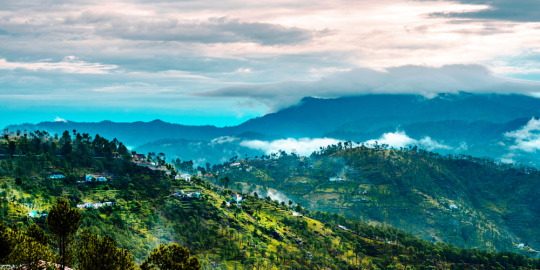
Subtropical Forests
In the lower altitudes of Almora, subtropical forests are prevalent. These forests are dominated by species such as:
Sal (Shorea robusta): Sal trees are common in the lower regions, providing valuable timber and forming the backbone of these forests.
Chir Pine (Pinus roxburghii): Chir Pine forests are widespread and play a significant role in the local economy due to their resin and timber.
The understory in these forests is rich with a variety of shrubs, grasses, and herbs, creating a dense and diverse habitat.
Temperate Broadleaf and Mixed Forests
As one ascends to higher altitudes, the subtropical forests give way to temperate broadleaf and mixed forests. Key species in these forests include:
Oak (Quercus spp.): Several species of oak, such as Banj Oak (Quercus leucotrichophora) and Moru Oak (Quercus floribunda), are common. These trees are crucial for maintaining soil stability and supporting diverse wildlife.
Rhododendron (Rhododendron arboreum): The state tree of Uttarakhand, the rhododendron, is known for its vibrant red flowers that bloom in the spring.
These forests also support a variety of ferns, lichens, and mosses, adding to the biodiversity of the region.
Subalpine Vegetation
In the highest regions of Almora, subalpine vegetation becomes dominant. This zone is characterized by:
Coniferous Trees: Species such as Blue Pine (Pinus wallichiana) and Deodar (Cedrus deodara) are prevalent, adapted to the colder and harsher conditions.
Alpine Meadows: During the short growing season, alpine meadows burst into a riot of colors with wildflowers like Himalayan Blue Poppy (Meconopsis betonicifolia) and various species of primulas and asters.
Fauna of Almora
Mammals
Almora’s diverse habitats support a wide range of mammalian species, many of which are adapted to the varying altitudinal zones.
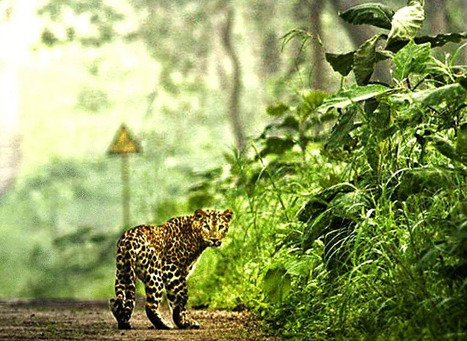
Himalayan Black Bear (Ursus thibetanus): This bear is often seen in the temperate forests, foraging for food and known for its distinctive white chest patch.
Leopard (Panthera pardus): Leopards are elusive predators found across various altitudes, playing a crucial role in maintaining the ecological balance.
Goral (Naemorhedus goral): This small, agile ungulate inhabits the rocky slopes and cliffs, known for its excellent climbing abilities.
Barking Deer (Muntiacus muntjak): Commonly found in the lower forests, this deer species is known for its bark-like call used to communicate danger.
Birds
Almora is a paradise for birdwatchers, with a rich avifauna that includes both resident and migratory species.
Himalayan Monal (Lophophorus impejanus): The national bird of Nepal, the Himalayan Monal, is known for its stunning iridescent plumage and is commonly found in the higher forests.
Kalij Pheasant (Lophura leucomelanos): This beautiful bird with striking black and white plumage is often seen foraging in the underbrush.
Himalayan Griffon (Gyps himalayensis): A large vulture that plays a vital role in the ecosystem by feeding on carrion.
White-throated Laughingthrush (Garrulax albogularis): These social birds are often seen in flocks, making their presence known with their loud calls.
Reptiles and Amphibians
Almora also supports a variety of reptiles and amphibians, particularly in the lower and mid-altitude zones.
Himalayan Pit Viper (Gloydius himalayanus): A venomous snake adapted to the cooler climates, often found in rocky areas.
Common Toad (Duttaphrynus melanostictus): Widely distributed, these toads are commonly seen during the monsoon season.
Invertebrates
The invertebrate fauna of Almora includes numerous species of insects, spiders, and other arthropods. The region is particularly rich in butterflies, with notable species such as the Common Peacock (Papilio bianor) and the Indian Tortoiseshell (Aglais caschmirensis).
Endangered Species and Conservation Efforts
The biodiversity of Almora faces various threats from habitat loss, climate change, and human activities. Several species in the region are classified as endangered or critically endangered.
Key Endangered Species
Himalayan Musk Deer (Moschus leucogaster): Poached for its musk gland, this deer species is in decline.
Western Tragopan (Tragopan melanocephalus): Habitat destruction and hunting have significantly reduced its population.
Snow Leopard (Panthera uncia): Though more common in higher regions, occasional sightings and conservation efforts in Almora are crucial for this species.
Conservation Initiatives
Efforts to protect the biodiversity of Almora involve a combination of government policies, non-governmental organizations, and community participation.
Protected Areas: Establishing and maintaining protected areas like the Binsar Wildlife Sanctuary, which provides a safe haven for many species.
Community-Based Conservation: Engaging local communities in conservation efforts, promoting sustainable practices, and providing alternative livelihoods to reduce dependence on forest resources.
Anti-Poaching Measures: Strengthening anti-poaching laws and enhancing enforcement to protect endangered species from illegal hunting and trade.
Research and Monitoring: Continuous research and monitoring are essential for tracking the health of ecosystems and the populations of key species, providing data to inform conservation strategies.
The Impact of Climate Change
Climate change poses a significant threat to the biodiversity of Almora. Rising temperatures, changing precipitation patterns, and extreme weather events are already having profound effects on the region's ecosystems.
Glacial Melt
Although Almora is not directly affected by glacial melt, the broader impacts on water resources and climate patterns in the Himalayas influence the region. Changes in water availability can affect both human communities and wildlife.
Shifts in Vegetation Zones
As temperatures rise, vegetation zones are shifting upward, forcing species to migrate to higher altitudes. This can lead to habitat loss and increased competition among species. Alpine plants, in particular, are at risk as they have limited space to move.
Phenological Changes
Climate change is also affecting the timing of biological events, such as flowering and breeding. These phenological changes can disrupt ecological interactions, such as pollination and predator-prey relationships, further stressing the biodiversity of the region.
Sustainable Tourism and Biodiversity Conservation
Tourism is a significant economic activity in Almora, attracting visitors for its natural beauty, wildlife, and cultural heritage. However, tourism can also pose threats to biodiversity if not managed sustainably.
Ecotourism
Promoting ecotourism, which emphasizes responsible travel and environmental conservation, can help mitigate the negative impacts of tourism. Ecotourism initiatives focus on minimizing environmental footprints, supporting local communities, and educating tourists about conservation.
Best Practices for Sustainable Tourism
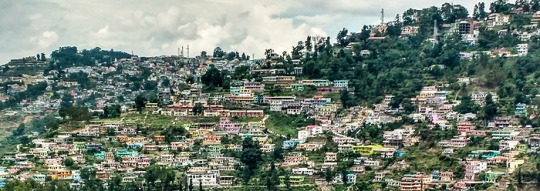
Waste Management: Implementing effective waste management systems to reduce litter and pollution in natural areas.
Eco-Friendly Accommodations: Encouraging the development of eco-friendly accommodations that use renewable energy and sustainable practices.
Guided Tours: Offering guided tours led by trained naturalists to educate tourists about the local biodiversity and conservation efforts.
Community Involvement: Involving local communities in tourism activities to ensure that they benefit economically and are incentivized to protect their natural surroundings.
Conclusion
The biodiversity of Almora is a testament to the intricate balance of nature, shaped by its unique geography, climate, and ecosystems. From the dense subtropical forests to the alpine meadows, Almora supports a rich array of plant and animal species, many of which are endemic and endangered. Conservation efforts, including protected areas, community-based initiatives, and sustainable tourism practices, are crucial to preserving this natural heritage. As climate change and human activities continue to pose challenges, it is imperative to strengthen these efforts to ensure that the biodiversity of Almora can thrive for generations to come.
1 note
·
View note
Text
The Benefits of Using Natural Facial Cleansers: Exploring Different Forms
In the quest for healthy, radiant skin, facial cleansers play a pivotal role. Among the myriad options available, natural facial cleansers have gained significant popularity due to their gentle yet effective properties. This article delves into the benefits of using natural facial cleansers, defines various forms of these cleansers, and explores the intriguing world of charcoal toothpaste as a unique addition to your skincare and oral hygiene routine.
The Benefits of Using Natural Facial Cleansers
Natural facial cleansers offer numerous advantages over their synthetic counterparts. Here are some key benefits:
Gentle on the Skin: Natural cleansers typically contain fewer harsh chemicals, reducing the risk of irritation, redness, and dryness. They are suitable for all skin types, including sensitive and acne-prone skin.
Nutrient-Rich Ingredients: These cleansers are often packed with vitamins, minerals, and antioxidants from natural sources, which can nourish and rejuvenate the skin.
Eco-Friendly: Natural cleansers are usually biodegradable and come in environmentally friendly packaging, reducing their impact on the planet.
Fewer Allergens: By avoiding synthetic fragrances, dyes, and preservatives, natural cleansers minimize the risk of allergic reactions.
Balanced Skin: Natural ingredients like essential oils and botanical extracts help maintain the skin’s natural pH balance, promoting healthy and resilient skin.
Types of Natural Facial Cleansers
Natural facial cleansers come in various forms, each designed to address specific skin concerns and preferences. Here are the main types:
Oil Cleansers
Cream Cleansers
Foam Cleansers
Gel Cleansers
Powder Cleansers
Micellar Water
Charcoal Toothpaste (for facial cleansing)
Oil Cleansers
Oil cleansers utilize natural oils to dissolve makeup, dirt, and excess sebum without stripping the skin of its natural oils. They are effective for all skin types, especially dry and sensitive skin.
Benefits:
Removes makeup and impurities
Maintains natural skin oils
Provides hydration and nourishment
Usage Tips:
Apply to dry skin.
Massage gently to dissolve impurities.
Rinse thoroughly or wipe off with a warm, damp cloth.
Cream Cleansers
Cream cleansers are thick and moisturizing, ideal for dry and sensitive skin. They cleanse while providing hydration, leaving the skin soft and supple.
Benefits:
Gentle and hydrating
Removes impurities without stripping moisture
Suitable for dry and sensitive skin
Usage Tips:
Apply to dry or damp skin.
Massage gently in circular motions.
Rinse or wipe off with a soft cloth.
Foam Cleansers
Foam cleansers create a rich lather that effectively removes dirt and oil. They are particularly beneficial for oily and acne-prone skin but may be too drying for dry or sensitive skin.
Benefits:
Deep cleansing
Removes excess oil
Helps to unclog pores
Usage Tips:
Wet your face with warm water.
Apply a small amount of foam cleanser and massage it into the skin.
Rinse thoroughly with lukewarm water.
Gel Cleansers
Gel cleansers are lightweight and clear, designed for deep cleansing. They are suitable for combination to oily skin, helping to control oil production without drying out the skin.
Benefits:
Deep cleansing
Balances oil production
Refreshing and cooling effect
Usage Tips:
Apply to damp skin.
Massage gently in circular motions.
Rinse with lukewarm water.
Powder Cleansers
Powder cleansers come in a dry form that transforms into a creamy lather when mixed with water. They offer gentle exfoliation and are suitable for all skin types.
Benefits:
Gentle exfoliation
Customizable consistency
Suitable for all skin types
Usage Tips:
Mix a small amount of powder with water to create a paste.
Apply to the face and massage gently.
Rinse thoroughly with water.
Micellar Water
Micellar water contains micelles, tiny oil molecules suspended in water, which attract and lift away dirt and oil. It is gentle and effective for removing makeup and impurities, ideal for all skin types.
Benefits:
Gentle and non-irritating
No need to rinse
Convenient for quick cleansing
Usage Tips:
Soak a cotton pad with micellar water.
Gently wipe over the face and eyes.
Repeat until the cotton pad comes away clean.
Charcoal Toothpaste: A Unique Skincare Tool
While charcoal toothpaste is primarily designed for oral hygiene, its benefits extend to skincare, particularly as a natural facial cleanser. Activated charcoal is known for its excellent detoxifying properties, making it a powerful ingredient for removing impurities from the skin.
Benefits of Charcoal Toothpaste in Skincare
Deep Cleansing: Activated charcoal has a porous structure that helps to draw out dirt, toxins, and excess oil from the skin, providing a deep cleanse.
Exfoliation: Charcoal toothpaste can act as a gentle exfoliant, helping to remove dead skin cells and promote a smoother complexion.
Oil Control: Charcoal's absorbent properties can help balance oily skin by removing excess sebum.
Brightening: Regular use can help brighten the skin by removing impurities and dead skin cells that contribute to a dull complexion.
Conclusion
Natural facial cleansers offer a gentle yet effective way to maintain healthy, balanced skin. From oil and cream cleansers to foam and gel options, there is a natural cleanser suitable for every skin type and concern. Charcoal toothpaste, though unconventional, can also serve as a powerful facial cleanser, leveraging the detoxifying properties of activated charcoal to deeply cleanse and brighten the skin. By incorporating these natural options into your skincare routine, you can enjoy the benefits of clean, radiant, and nourished skin while minimizing the risk of irritation and environmental impact.
2 notes
·
View notes